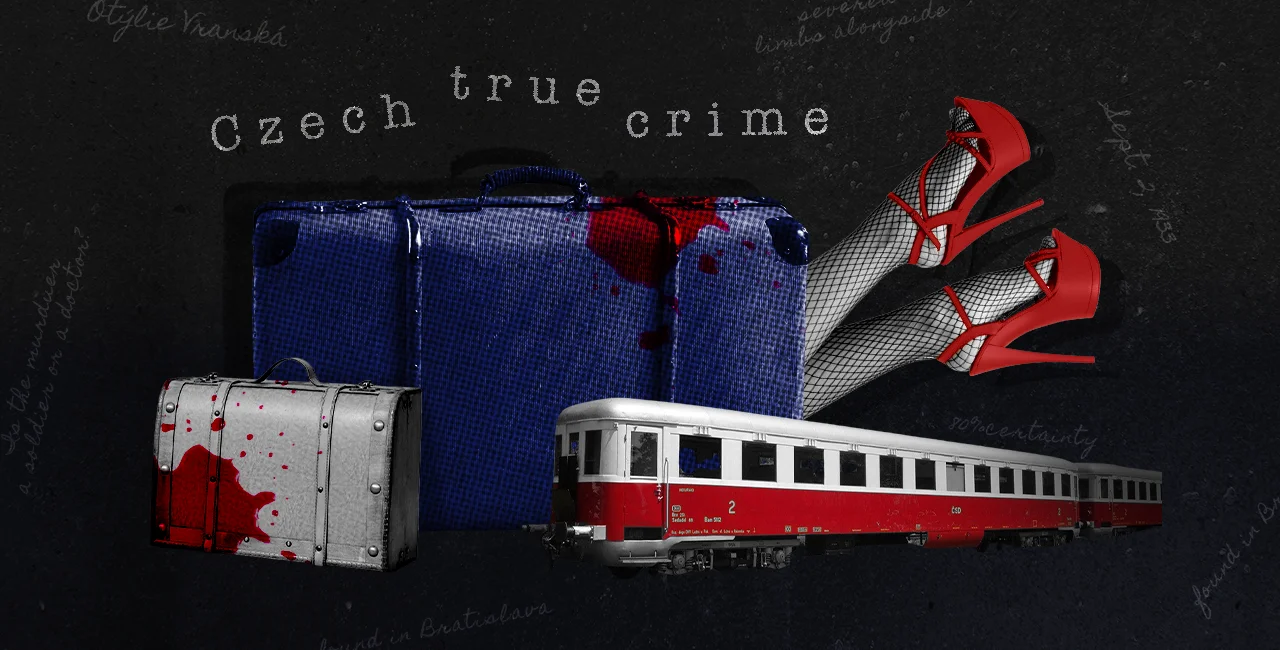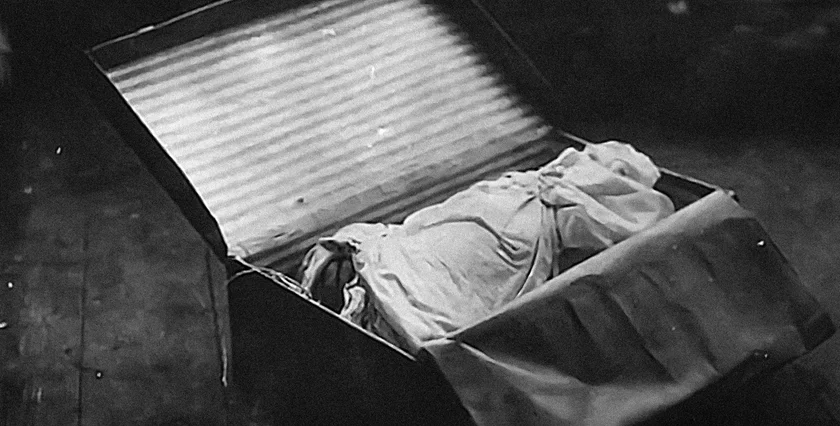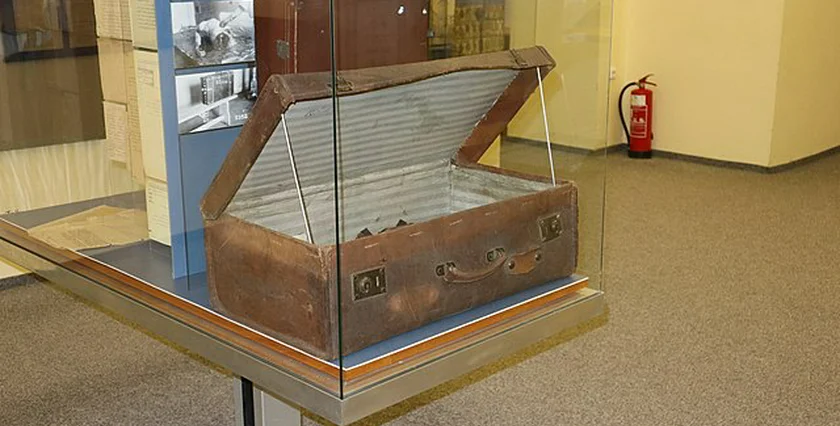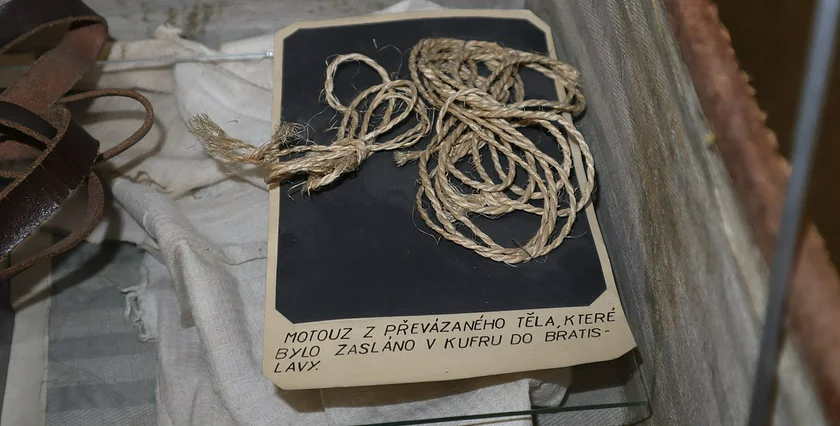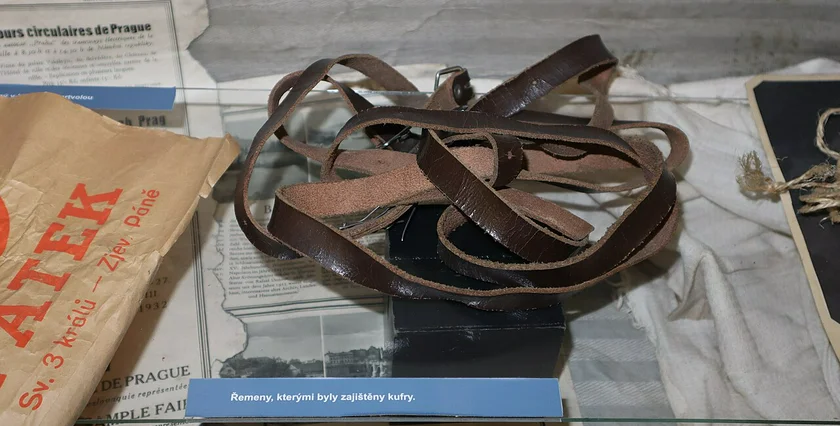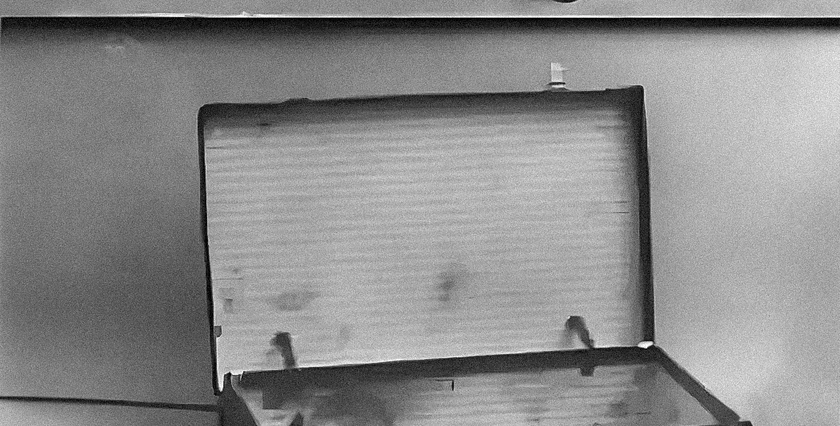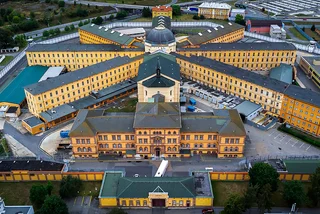Our new series takes a look at Czech history through the lens of some of the country's most infamous mysteries and criminal cases.
On Sept. 2, 1933, railway station workers in Slovakia came across two abandoned, yet innocuous-looking, pieces of luggage. What they saw upon opening the cases set in motion a decades-long mystery that gripped the nation.
The first case – found in Bratislava – contained the severed head and legs of a young woman. The second piece of luggage, discovered in the city of Košice, contained a torso with stab wounds, with severed limbs alongside.
Czechoslovak police soon connected the two and found out they had been sent there the previous day from two different railway stations in Prague.
A manhunt underway
On Sept. 4, with still no clue as to the identity of the victim – let alone the circumstances of her death – police displayed in the window of their headquarters in Prague 1’s Bartolomějská Street the pieces of luggage, the various items found in them as well as pictures of the deceased, which quickly appeared on the front pages of every major newspaper in the country.
In the midst of a spiraling media frenzy, two Slovak women came forward and identified the victim as their sister: Otýlie Vranská, a 22-year-old woman from a poor background in rural Slovakia, who had been working as a street girl in Prague since the previous March.

The investigation into the circumstances of her death and identity of the killer could now truly begin… and would remain unfinished for nearly a century.
A media frenzy
“The case became a sensation very quickly only because the perpetrator was never found”, Radek Galaš, director of the Czech Police Museum, explained. Galaš noted that the method used to dispose of the body was, strangely enough, not that unheard of at the time.
“The media made a total sensation out of it. By the end of the year, hundreds of pages of print had been devoted to the topic, and some of them were completely sensationalized. Of course, this aroused people’s curiosity. A lot of rumors and fabrications started circulating – including from journalists, who sometimes made up the most flagrant rubbish.”
Side-tracked by thousands of letters from ordinary people claiming to know who did it – often based on nothing more than creative assumptions or to settle score with some troublesome neighbors – Czech police investigators committed several critical mistakes from the get-go, including by failing to secure the victim’s fingerprints, which might have helped identify her sooner.
Was the murderer a doctor…?
Enter the medical examiner, who – based on the undigested remains of an apple – established the time of death in the middle of the night of Aug. 31-Sept. 1, approximately between 1-3 a.m.
The autopsy further mistakenly diagnosed that two blows to her head were the immediate cause of death, and that the body was later mutilated and dismembered with chirurgical precision which – it was claimed – indicated that the killer had a deep knowledge of the human body and anatomy.
Persisting for decades, this theory misled police investigators into searching for a doctor, medical student, or other suspects with such medical skills.
Despite those early mishaps, witnesses’ testimonies were key in putting the police on the right track, and as close as they would ever get to the suspected killer.
…or a senior army officer?
According to Vranská’s sister, the young street girl had been promised marriage – on top of a job – by sergeant-major of the Kasárna military barracks Josef Pěkný, a man she had been frequenting since the previous spring. Other witnesses testified that Vranská had met with Pěkný and another prostitute frequently used by him, Antonie Koklesová, on that ominous night of Aug. 31.
A divorced man with some social standing who denied he had promised her marriage, Pěkný was now skyrocketed as prime suspect; or at least should have been.

The police's failure
Having failed to come forward personally after the police’s public appeal, both Pěkný and Koklesová were later interrogated by Czech officers who failed to see the contradictions in their respective statements, instead believing the alibi they provided to each other.
Investigators also did not bother to search the sergeant-major’s apartment, despite evidence of Vranská’s body having been washed after her death, indicating the murder was likely committed in a domestic setting that allowed for some level of privacy.
A motive to kill
Had Vranská – cast aside by a former lover who had presumably reneged on his betrothal promise – threatened to cause a scandal, the sergeant also had a clear motive to get rid of her.
According to the timeline established at the time based on the suspects’ testimony, Vranská met with Pěkný, accompanied by Koklesová, around 8 p.m. An argument ensued, the three of them moved to a restaurant in the center before presumably parting ways amicably, close to Karlovo náměstí, at around 11 p.m.
The Pěkný-Koklesová duo went back to the former’s flat. For herself, Vranská reportedly met in a bar with another young blonde man (whose identity remains unknown), had some wine, and an apple. She was last seen alone, peering inside a restaurant in Melantrichova Street but not entering.
The following day, her severed body parts were found.
The perpetrator was never found nor arrested, and the case was closed in the 1940s, while letters purporting to know the identity of the killer continued to arrive well into the 1960s. For decades, the Vranská case gripped the imagination of generations of true crime enthusiasts and criminologists.
‘Eighty percent sure’
Then, a breakthrough.
On the 90th anniversary of the murder last September, director of the Police Museum Radek Galaš said they were now “80 percent sure” sergeant-major Josef Pěkný – with the active or passive help of Koklesová – had indeed murdered the 22-year-old Slovak prostitute nearly a century prior.
Leading a team of historians at the Czech Police Museum – former police officers themselves – Galaš and his colleagues went through piles of archive materials to help identify the errors committed throughout the investigation at the time, connect the missing dots, and conduct new DNA analyses with relatives and descendants of the duo, long dead.
They also went through the original autopsy report of professor Hájek, which differed in several aspects from the police report, now believing that the beheading and dismemberment weren’t as clear-cut as initially thought, and thus could plausibly have been performed by Pěkný with his saber.

The new working theory is that Vranská, unable to go back to her flat because of her landlady’s midnight curfew, eventually traced back her steps to Pěkný’s flat at Táborská 141 to confront him or hold him to his word. There, she was murdered and dismembered…
… with 80 percent certainty.












 Reading time: 5 minutes
Reading time: 5 minutes 